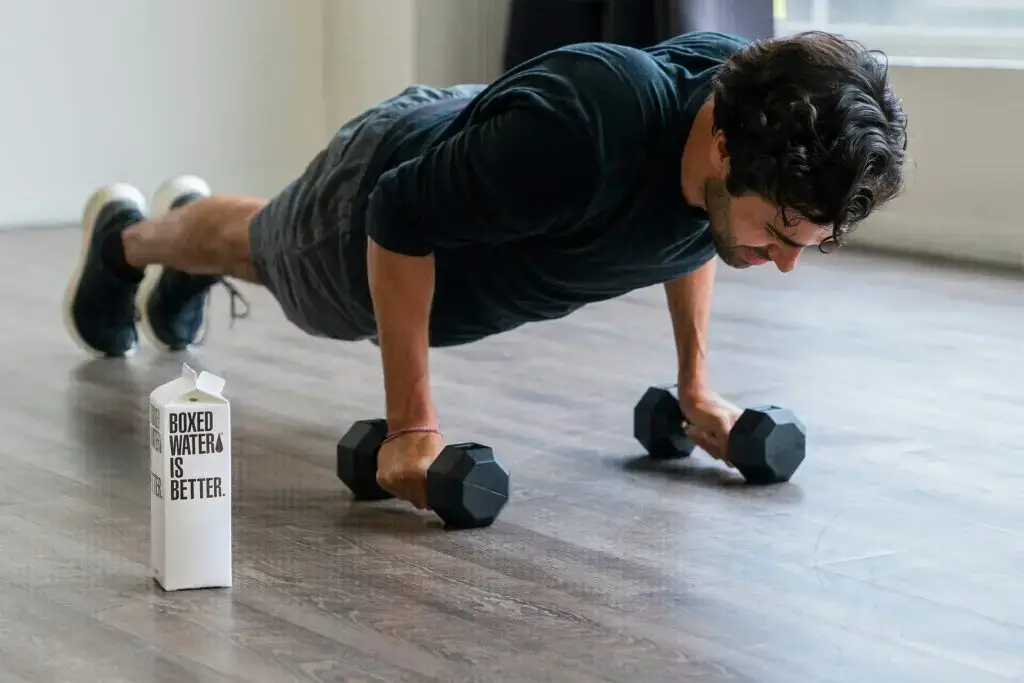There are several reasons why you might not be losing weight. Weight gain can be caused by factors such as eating too many calories and not burning enough through activity. Hormonal issues like thyroid problems and age-related factors such as menopause and a slower metabolism can also play a role.
These factors can often be identified through testing, either with your doctor or at a local pharmacy. Stress can also trigger weight gain, which increases the hormone cortisol, which is released when your body and mind start telling your brain and gut that you’re stressed. This can also lead to individual overeating on calories to combat stress. In this article, I’ll help you understand these factors and how proper testing and monitoring can improve your health and quality of life.
As a sports scientist and personal trainer with over a decade of experience, I’ve worked with many people who struggled to lose weight and often felt low on energy. My first piece of advice is always the same: consult your doctor and get these areas checked.
I’ve helped many clients lose between 10–30 kg of body fat. And the one thing they all had in common? They focused on strength training, hormone testing, and creating a calorie deficit, without extreme dieting.
- Thyroid check
- Hormone check
- Start strength training
Why check your thyroid?
Your thyroid regulates metabolism, energy levels, and water balance. It plays a central role in maintaining body weight and overall health and is essential for losing weight. An underactive thyroid (hypothyroidism) can lead to fatigue, weight gain, bloating, low mood, and slow digestion, all of which can stall fat loss and create frustration and lack of motivation.
A simple blood test can be done. These are the components they should be testing for TSH, T3, and T4 levels. These will tell you if your thyroid is functioning properly. If it’s not, medical support and lifestyle changes can make a big difference. Don’t overlook this, it’s a key factor in energy balance and weight control.
Check your hormone levels
Over the years of training clients and speaking with individuals at the gym, one piece of advice I always give first is to get your hormones checked out. Hormones are chemical messengers that affect everything from how hungry you feel to where your body stores fat. If even one is off, progress slows down. I’d advise you to take it very seriously and get it checked out, and I promise you won’t regret doing it and make sure you do with the result after it’s with a doctor’s advice or a specialist in that area.
- Cortisol (stress hormone): HIGH LEVELS can lead to fat gain, especially around the stomach.
- Insulin(blood sugar regulator): This is a significant aspect of weight management because Poor insulin sensitivity can lead to increased fat storage and energy crashes
- Oestrogen/testosterone: Imbalances here can affect muscle growth, recovery, mood, and appetite. Which all affect your body’s ability to build muscle and burn calories at rest.
weight training
Strength training is essential for long-term body composition changes, such as losing body fat and gaining muscle. It helps you build and maintain muscle, which increases your resting metabolic rate, so you burn more calories even when you’re not training. Doing strength training will increase your productivity and quality of life. Recent studies have shown that exercising and strength training can reduce the risk of cancer and health-related problems.
Start with 2–3 sessions per week. Focus on big compound movements like squats, lunges, presses, and rows. Keep the form solid, use moderate weights, and aim to progress gradually over time. Download the 12Reps app to get workout programs and all exercise demos. We have over 1,000 exercises for you to do. 12 reps help you personalise your workouts intensely.
Lower body day
Warm-up and cool-down should be performed before every session.
Kettlebell box goblet squats: 4 sets of 12 reps
Bodyweight box step-ups: 4 sets of 20 reps (10 each leg)
Leg press: 4 sets of 15-8 reps
Leg exercise: 4 sets of 20 reps
Sled push: 4 sets of 40 metres
Upper body session
Dumbbell chest press: 4 sets of 12 reps
Assisted machine pull-ups: 4 sets of 6-8 reps
Dumbbell shoulder press: 4 sets of 12-10 reps
Dumbbell single-arm row: 4 sets of 20 reps (10 on each arm)
Machine chest press: 4 sets of 12-10 reps

By doing all these factors, you’ll start to understand how your body works and how you can personalise each factor to fit into your life and help you make progress. This article is written from my experience, having trained hundreds of people and helped them lose weight. Below is one of my transformations featured in the men’s fitness magazine.
Download the 12rep app and get the first month 75% off.












